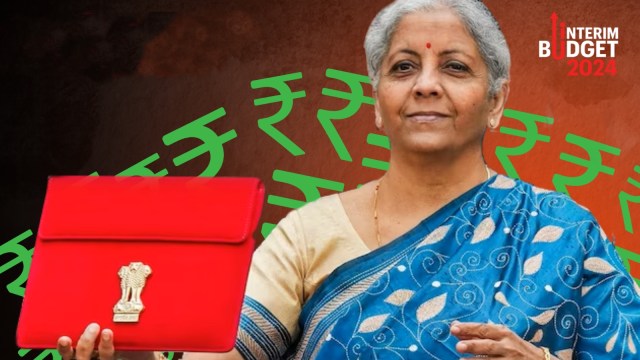
While Sitharaman did not announce any big-ticket welfare programme, she said the government will launch a scheme for the middle class “living in rented houses, or slums, or chawls and unauthorised colonies” to buy or build their own houses. Depending on the scale of the scheme, it has the potential to give a fillip to the construction sector, which not only provides jobs, but boosts domestic demand for capital goods, steel, cement, etc.
Story continues below this ad
The Finance Minister expects the nominal GDP growth rate to be 10.5% (Rs 3.27 lakh crore or $3.94 trillion assuming 1 USD = Rs 83, in absolute terms) in 2024-25. Even if retail inflation is assumed to be 4%, this would mean a real GDP growth rate of 6.5% next year compared with 7.3% in 2023-24. In its review of the economy earlier this week, the Finance Ministry had expected the economy to clock at least 7% growth over the next few years.
After the Budget presentation, Prime Minister Narendra Modi said, “This Budget will empower all pillars of developed India — the youth, the poor, women, and farmers. It carries the guarantee of strengthening the foundation of Viksit Bharat by 2047.” Given the fast population growth and demographic changes, the Finance Minister said a high-powered committee will be formed for stakeholder consultations, and then make recommendations towards achieving the goal of Viksit Bharat.
Given that spending would slow down in the months after the Model Code of Conduct kicks in, Sitharaman has snipped the fund allocation for 2023-24 across several ministries, which helped her cut the fiscal deficit to 5.8% of GDP in the revised estimate, which is 10 basis points lower than the budget estimate. For the next financial year 2024-25 too, she has estimated the fiscal deficit to drop further to 5.1% of GDP, which means lower government borrowings.
While Sitharaman has allocated Rs 11,11,111 crore (3.4% of GDP), a 17% higher outlay for capital expenditure, or spending that is directed towards creating productive assets, it is lower than the 28% increase she had provided in 2023-24. But this probably comes from confidence that boardrooms in India Inc will now start clearing investment plans. In fact, projecting lower borrowing in 2024-25, she said, “Now that the private investments are happening at scale, the lower borrowings by the Central government will facilitate larger availability of credit for the private sector.” Market borrowings are estimated to almost Rs 50,000 crore lower in the next financial year.
Story continues below this ad
The Budget did not make any changes in tax rates, but offered a resolution scheme that effectively will lead to the withdrawal of outstanding direct tax demands of up to Rs 25,000 up to 2009-10, and up to Rs 10,000 for financial years 2010-11 to 2014-15, because of which refunds to taxpayers were held back. “This is expected to benefit about a crore tax-payers,” Sitharaman said. Officials said this could mean a benefit to one in eight tax filers.
In line with developments in the technology and startup ecosystem, the Finance Minister also announced the setting up of a Rs 1 lakh crore corpus with 50-year interest free loan. The corpus will provide almost zero or low interest rate loans with a long tenor for research and innovation by the private sector in sunrise industries. Alongside, she said a new scheme would be launched for strengthening deep tech in defence and for ‘atmanirbharta’.
To incentivise states towards more productive spending, the Finance Minister also continued with the scheme to provide a 50-year interest free loan for capital expenditure. For 2024-25, she allocated Rs 1.3 lakh crore, 30% more in 2023-24. This includes Rs 75,000 crore as 50-year interest free loans to support milestone-linked reforms by states under Viksit Bharat. Further, to encourage states to develop, brand and market iconic tourist centres at global scale, she said long-term interest free loans will be provided to them on matching basis.


































